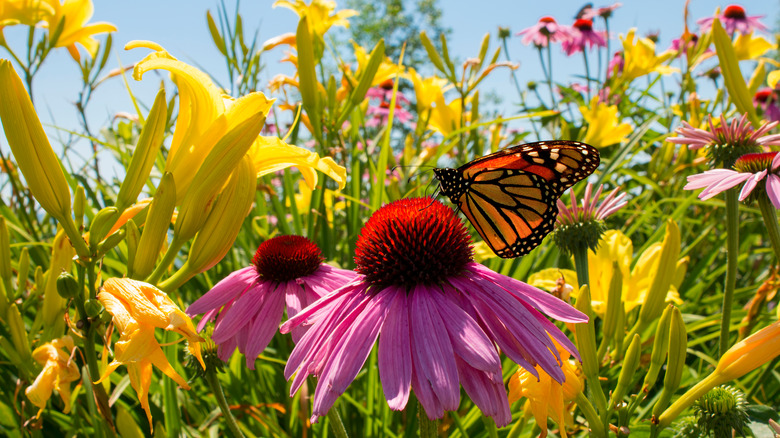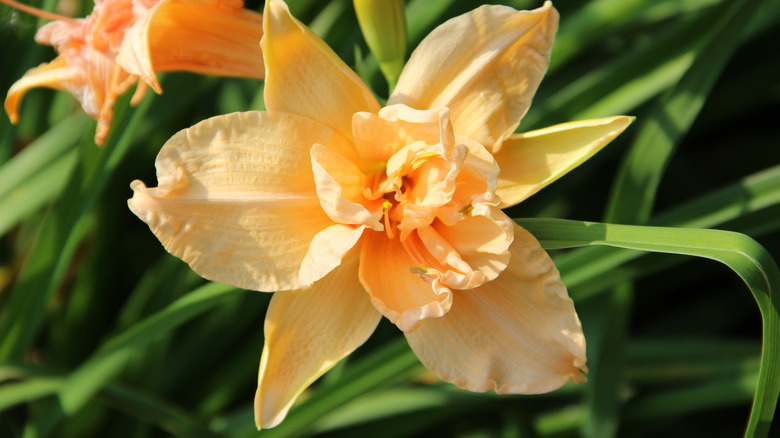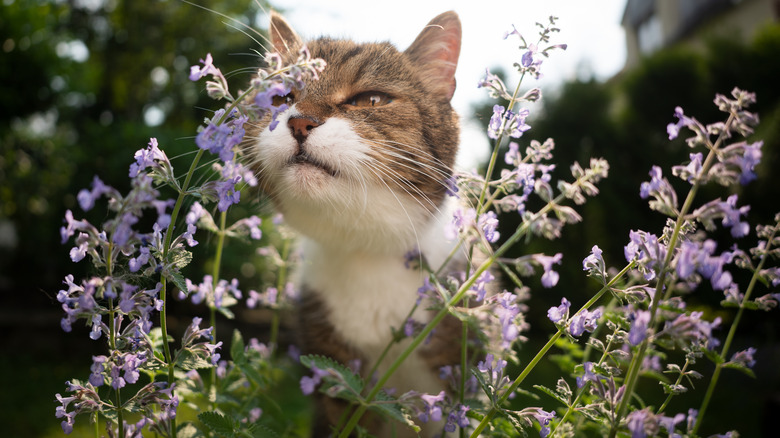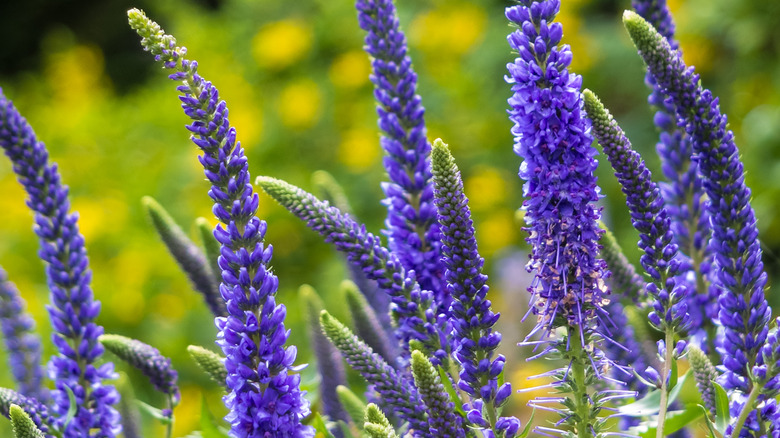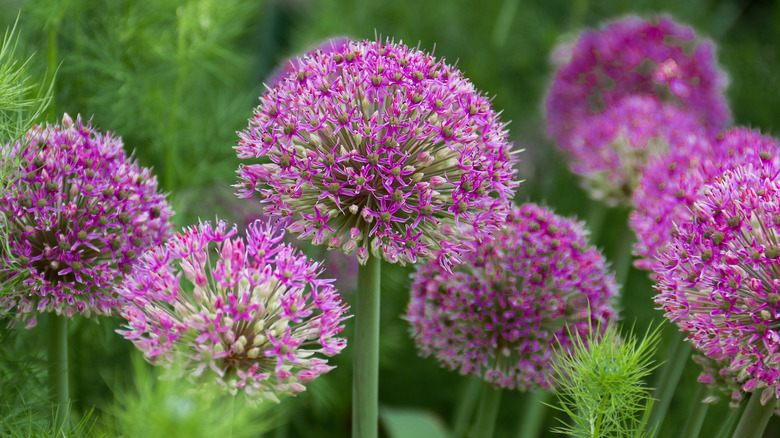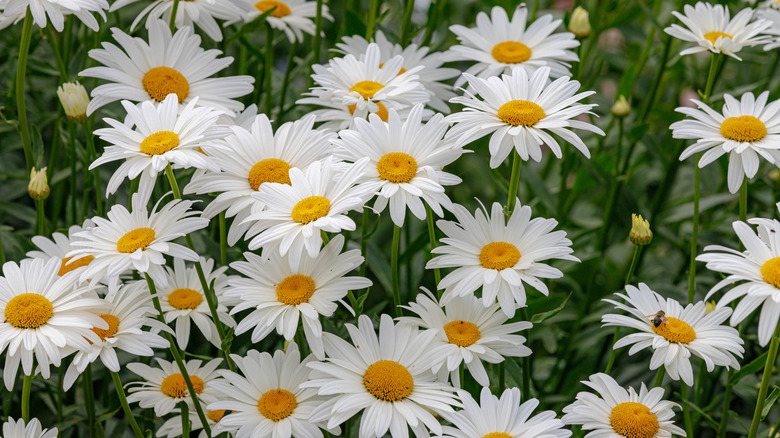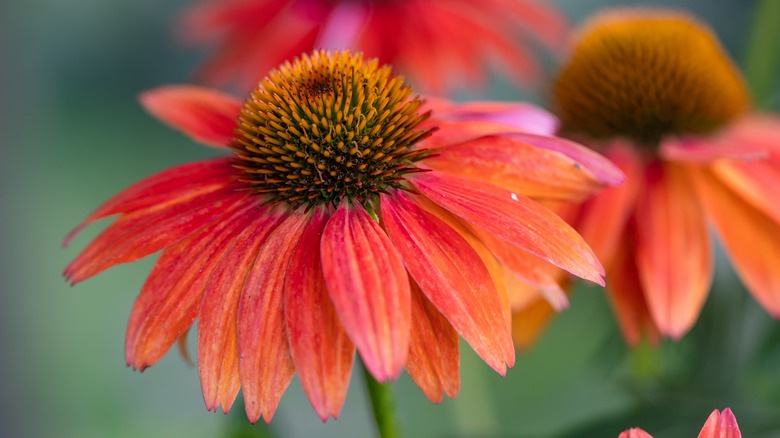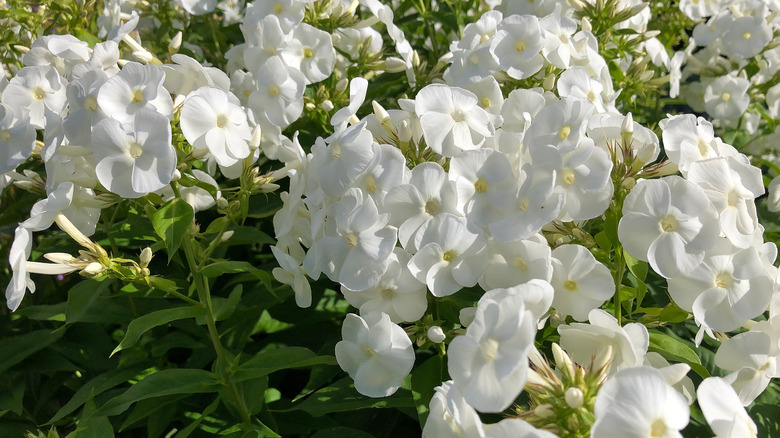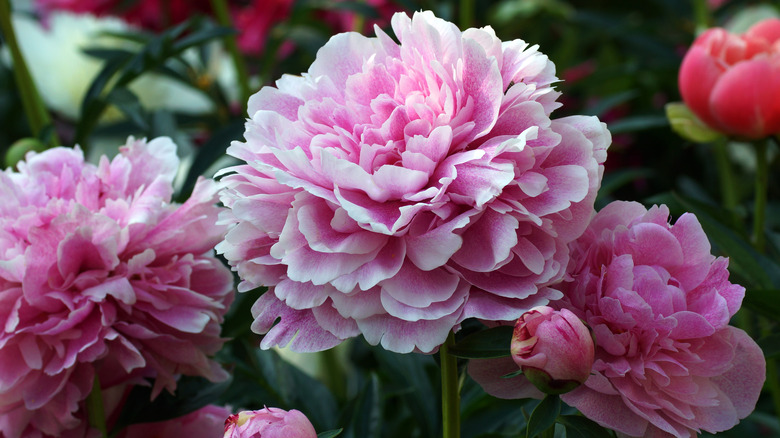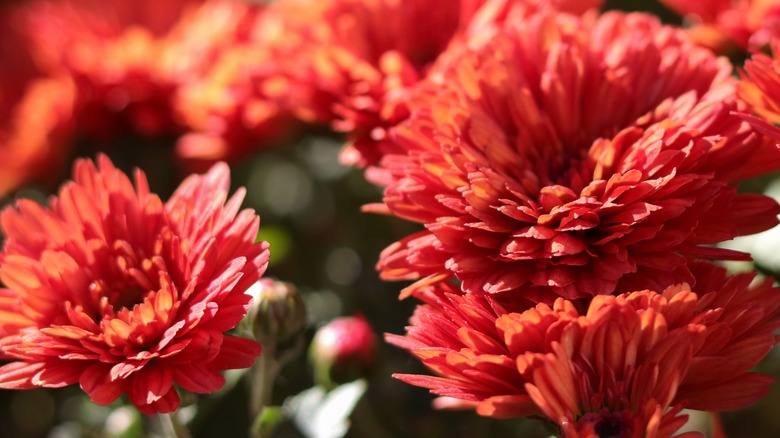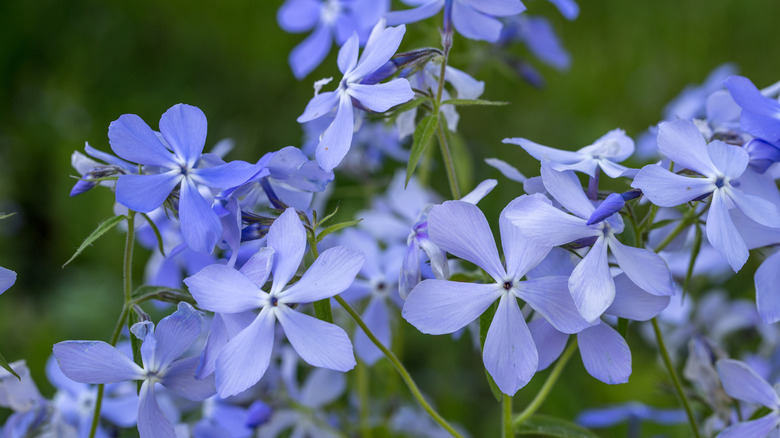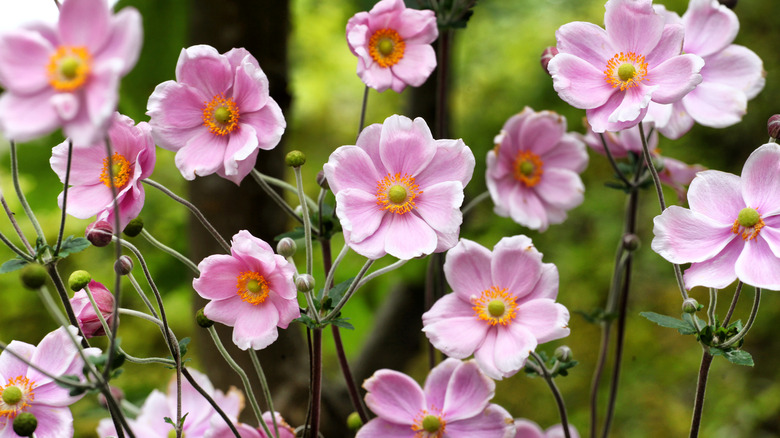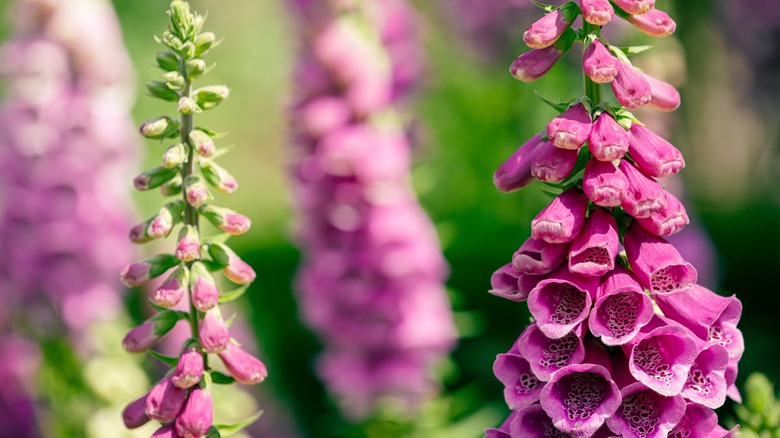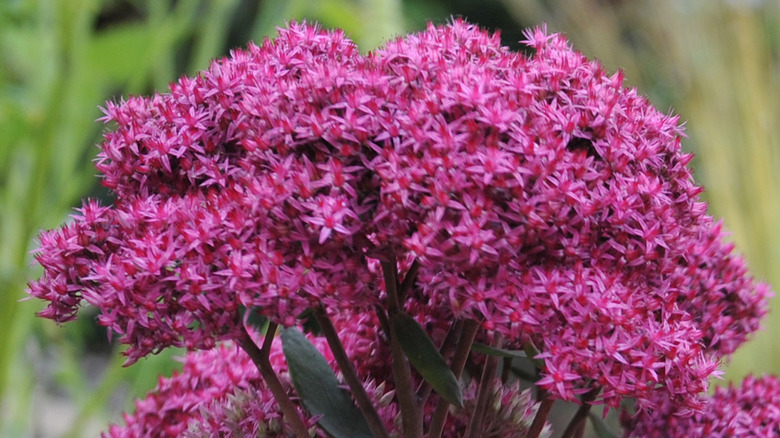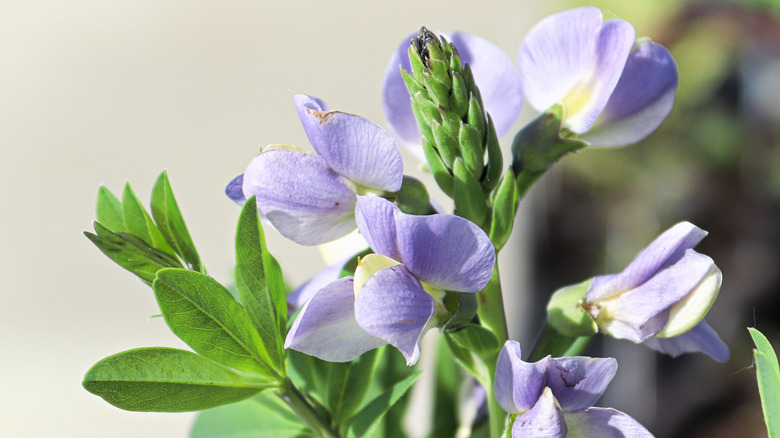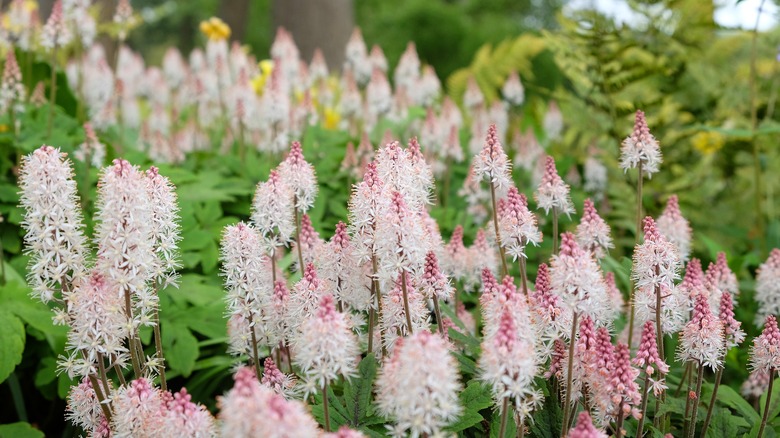15 Perennial Plants Perfect For Your Garden
With the arrival of summer, you may be thinking about giving your home garden an update to create a fresh and colorful appearance. There are many plants to choose from, but perennials may be able to give you the update you're looking for. These plants are able to survive for many years, and their history can be traced back some 11,000, according to Britannica.
Greater awareness of perennials in the United States rose about 80 years ago. Per Britannica, in the 1930s and '40s, the U.S began to turn its attention to sustainable perennial agriculture, a response to the drought conditions at the time that had led to widespread crop devastation for the nation's farmers. Perennials that produced fruit and alfalfa were used to counter this issue, due to their long life span and ability to contribute to creating construction materials.
Perennials could be ideal plants for you to improve your garden, too. PennState Extension says perennials are quite simple to care for; it's all about observing if the plants are in the right conditions and are properly taken care of for each month of the year. In the following list, we take a look at 15 perennial plant varieties for you to consider when planning your garden.
Daylily
A popular perennial for home gardens is the daylily (genus Hemerocallis), which comes in different sizes and colors. Per The Old Farmer's Almanac, the daylily, despite its delicate appearance, is capable of making it through harsh environments with minimal care. However, while daylilies can survive in conditions that are less than ideal, they, too, will grow best in garden conditions that are better for them than not — that is, a spot where your daylilies can enjoy full sun. The daylily can also be safely planted in insufficient soil, but avoid planting them near competing trees and/or shrubs.
Catmint
Catmint (Nepeta mussinii) is another perennial that's not difficult to grow in a garden, and it shows off a beautiful shade of purple during the summer, per Piedmont Master Gardeners. When planting catmint, you should have well-drained soil ready in an area where the plant will be completely exposed to the sun. Note that catmint and catnip (Nepeta cataria) are different. As Gardening Know How explains, catnip typically has white flowers and is the herb that cats really respond to. Catmint also can attract cats, but it will not produce the same reaction.
Speedwell
Speedwell (Veronica spicata) is able to tolerate different soil and watering conditions, per Garden Design. In your garden, plant your speedwells in well-drained soil. Garden Design notes that this hearty perennial can even survive in drought conditions once it takes root.
When it comes to sunlight, this plant is capable of enduring partial sunlight, but it prefers to be hit with as much sunlight as possible. The flowers of this plant are spiked up and come in several colors, including white, blue, pink, and purple, according to Growers Direct.
Ornamental onion
Ornamental onion (allium) grows into an adorable and unique orb shape, and it comes in a variety of colors: gold, pink, lavender, burgundy, and white, according to NC State Extension. Although they're a pretty sight, ornamental onion produces the smell of onion or garlic. However, this means the perennial makes a great border for your garden. As Pest Pointers explains, the plant is able to both attract bees and butterflies to your garden and keep deer away from your other precious flowers.
Shasta daisy
The shasta daisy (Leucanthemum) is a long-lasting and fairly easy-to-grow perennial, according to Gardenia. This is a perennial that is highly sought out due to the beautiful flowers it produces: yellow heads with an array of white petals. The style of the flowers also varies; some are more full and others have erratic petals. This plant can grow between 2 to 4 feet tall and prefers to be in full sunlight but may prefer some shade when in areas of high temperatures.
Coneflower
The Coneflower (Echinacea) will bring your garden flowers that show off bright color and exuberant energy, and is commonly seen in most gardens, according to PerennialResource. Historically, Native Americans realized this plant was able to heal wild animals when consumed, according to SoftSchools. Native Americans then started using the juice from the root as a remedy for toothaches, sore throats, fevers, and more. Coneflowers must be planted somewhere with plenty of sun in well-drained soil that has plenty of nutrients, according to Almanac. It should also be somewhere that won't ever be shaded, and the soil shouldn't become wet.
Tall garden phlox
The perennial tall garden phlox (Phlox paniculata) shows off its beautiful flowers during the summer (via the University of Minnesota Extension). This perennial is capable of growing between 2 to 3 feet tall, and it comes in a plethora of colors: pink, rose, red, lavender, purple, orange, and white.
Keep tall garden phlox away from trees and shrubs to ensure they don't steal moisture away from this plant. With this said, the perennial should be planted somewhere in your garden with plenty of moisture and sunlight available for the best results. This type of plant needs to be regularly watered directly in the soil in order to prevent plant diseases.
Peony
Peony (Paeoniaceae) is a perennial that is native to areas in Europe, Asia, and western North America, according to Britannica. The English Garden says gardeners will enjoy this flower's ability to grow easily, and the fact that it doesn't need constant maintenance. When peony flowers bloom, they can grow to the size of dinner plates!
When planting peonies in your garden, ensure the hole isn't too deep; it requires a depth of 2.5 centimeters. Planting this perennial too deep may prevent the flowers from blooming. Peonies typically are planted in fertilized, free-draining soil. However, you can also plant them in chalky or clay substances.
Chrysanthemum
The chrysanthemum (genus Chrysanthemum) is among the 40 species of the Asteraceae family, or daisy family (via the Central Carolina Chrysanthemum Society). This perennial plant prefers to grow in warm, sunny conditions but needs to be put inside during the winter months, according to The Royal Horticultural Society.
Bloomed chrysanthemum flowers will go well with really any garden style, as they come in pastels and/or burnt shades. When planting, chrysanthemums need fertilized soil and decaying organic matter. The soil should never become dry, so this plant needs to be watered regularly.
Woodland phlox
The woodland phlox (Phlox divaricata) is able to grow 10 to 20 inches high and produces beautiful blue-violet colors — which typically bloom between late March to early May, according to OzarkEdgeWildflowers.com. If you desire pleasant scents to flow through your garden, this perennial produces soft fragrances that won't overpower others. Most places in the U.S. have the right climate to grow this plant, which can survive in zones three to eight. When growing the woodland phlox, ensure your garden provides partial shade, as full sun will burn the leaves.
Japanese anemone
The Japanese anemone (Anemone hupehensis) comes in three different colors: pink, purple, and white, according to The Morton Arboretum. Interestingly enough, this perennial plant is aware of hours of the day; at night, it closes its petals, and in the morning, it opens them back up. As Liaisons De Fleurs explains, the plant does this to stay away from the cold during the night. During the day, your garden's Japanese anemone should be exposed only to natural light and be provided with moist soil that can also drain itself.
Foxglove
The name of the perennial foxglove (Digitalis purpurea), or fox + glove, is quite precious and has inspired at least one children's story, "The Peacock," involving a clever fox, per A Green and Rosie Life; however, as the Oxford University Press notes, the origin of the name "foxglove" remains up for debate.
Foxglove can grow up to 5 feet high and is usually located at the back of a garden, according to The Old Farmer's Almanac. This plant is easy to grow, as long as you provide it with moist soil that's well-drained and contains organic material. Foxgloves enjoy being in the sun during the day but desire some shade in the afternoon.
Stonecrop
The stonecrop (genus Sedum) is one of 600 plants in the Crassulaceae family, per Britannica. This perennial is quite easy to maintain in one's garden, even through winter, as its dead leaves remain a beautiful sight, according to Gardenia. The flowers are also capable of attracting bees, hummingbirds, and butterflies to help keep the rest of your garden healthy; it's also capable of resisting deer and rabbits. This plant isn't too picky, as it can be grown in sandy soils, but it does need to be able to drain to prevent root rot.
False indigo
False indigo (Baptisia australis) lives long and can grow between 3 to 4 feet tall, with leaves blue-green in color, according to Wisconsin Horticulture. The perennial's flowers grow to be 2 to 3 inches in size and produce a lavender color. Like most perennials, this plant needs garden soil that is well-drained, which can be sandy or gravelly. You should also be careful not to over water a false indigo, because it can end up falling over.
Foamflower
The foamflower (Tiarella cordifolia) is native to the eastern U.S. and Canada (via the Clemson Cooperative Extension). Gardners will enjoy the plant's variety when it comes to color and shape, as well as its durability. Unlike other perennials, the foamflower needs to grow in an area of your garden that has complete shade, as well as moist conditions. Foamflower is capable of growing in zones three to eight, especially if you properly fertilize it in the spring with organic fertilizer.
